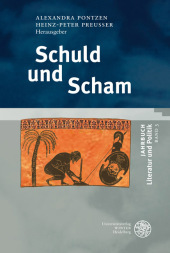
Muon Spectroscopy
An Introduction
-
10% KEDVEZMÉNY?
- A kedvezmény csak az 'Értesítés a kedvenc témákról' hírlevelünk címzettjeinek rendeléseire érvényes.
- Kiadói listaár GBP 43.99
-
21 016 Ft (20 015 Ft + 5% áfa)
Az ár azért becsült, mert a rendelés pillanatában nem lehet pontosan tudni, hogy a beérkezéskor milyen lesz a forint árfolyama az adott termék eredeti devizájához képest. Ha a forint romlana, kissé többet, ha javulna, kissé kevesebbet kell majd fizetnie.
- Kedvezmény(ek) 10% (cc. 2 102 Ft off)
- Kedvezményes ár 18 914 Ft (18 014 Ft + 5% áfa)
Iratkozzon fel most és részesüljön kedvezőbb árainkból!
Feliratkozom
21 016 Ft

Beszerezhetőség
Megrendelésre a kiadó utánnyomja a könyvet. Rendelhető, de a szokásosnál kicsit lassabban érkezik meg.
Why don't you give exact delivery time?
A beszerzés időigényét az eddigi tapasztalatokra alapozva adjuk meg. Azért becsült, mert a terméket külföldről hozzuk be, így a kiadó kiszolgálásának pillanatnyi gyorsaságától is függ. A megadottnál gyorsabb és lassabb szállítás is elképzelhető, de mindent megteszünk, hogy Ön a lehető leghamarabb jusson hozzá a termékhez.
A termék adatai:
- Kiadó OUP Oxford
- Megjelenés dátuma 2021. november 10.
- ISBN 9780198858966
- Kötéstípus Puhakötés
- Terjedelem432 oldal
- Méret 247x190x21 mm
- Súly 934 g
- Nyelv angol
- Illusztrációk 304 line illustrations and photographs 211
Kategóriák
Rövid leírás:
Aimed at beginner graduate students, this book provides a comprehensive introduction to muon spectroscopy and its uses in, among other applications, the study of semiconductors, magnets, superconductors, chemical reactions, and battery materials.
TöbbHosszú leírás:
Muons, radioactive particles produced in accelerators, have emerged as an important tool to study problems in condensed matter physics and chemistry. Beams of muons with all their spins polarized can be used to investigate a variety of static and dynamic effects and hence to deduce properties concerning magnetism, superconductivity, molecular or chemical dynamics and a large number of other phenomena. The technique was originally the preserve of a few specialists located in particle physics laboratories. Today it is used by scientists from a very wide range of scientific backgrounds and interests.
This modern, pedagogic introduction to muon spectroscopy is written with the beginner in the field in mind, but also aims to serve as a reference for more experienced researchers. The key principles are illustrated by numerous practical examples of the application of the technique to different areas of science and there are many worked examples and problems provided to test understanding. The book vividly demonstrates the power of the technique to extract important information in many different scientific contexts, all stemming, ultimately, from the exquisite magnetic sensitivity of the implanted muon spin.
Fundamental particles such as electrons and protons have been used since their discovery for uncovering the structures of materials and for diagnostics and treatment in medicine. Instruments called spectroscopes exploit the waves associated with energetic particles to glean information, much as X-rays were used to decipher the structure of DNA. In this text, authors introduce another fundamental particle called the muon and discuss its usage in spectroscopic analysis [...] covering properties of the muon, its interactive behaviors with surrounding materials, the history and physics of muon spectroscopy, and production of muons for experimentation. Each chapter includes solved and still-to-be-solved examples along with some model answers. Good illustrations and graphs support the description of this fascinating new method of delving more deeply into the structure of matter.
Tartalomjegyzék:
The Basics of ?SR
Part I: Elements of Muon Spectroscopy
Introduction
Muon Charge and Spin States
The Quantum Muon
Polarization Functions
Part II: Science with ?SR
Magnetism
Dynamic Effects in Magnetism
Measuring Dynamic Processes
Superconductors
Semiconductors and Dielectrics
Ionic Motion
Chemistry
Part III: Practicalities of Muon Spectroscopy
Making Muons
Instrumentation
Doing the Experiment
Part IV: Further Topics in Muon Spectroscopy
Calculating Muon Sites
Numerical Modelling
Low Energy ?SR
Stimulation Methods
High Magnetic Fields
Muons under Pressure
Negative Muon Techniques
Part V: Complementary Techniques
?SR versus Other Resonance and Bulk Techniques
X-rays, Neutrons, and ?SR
Free













